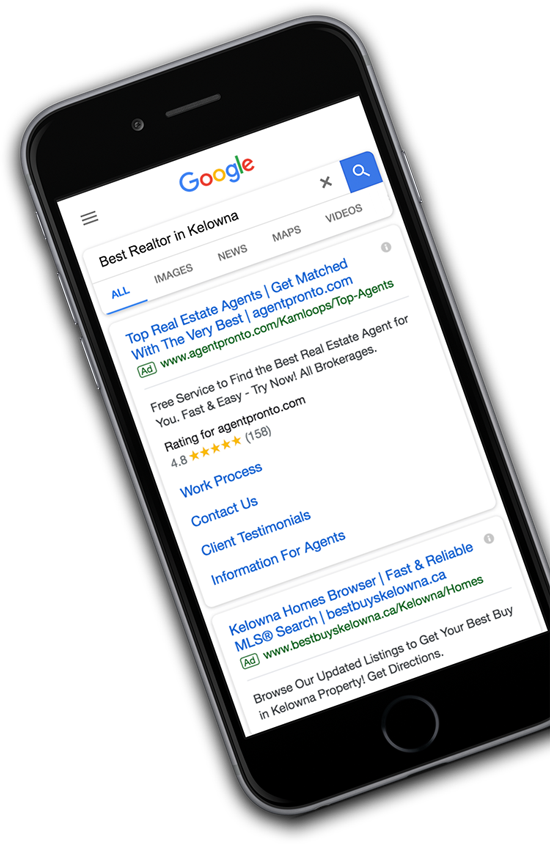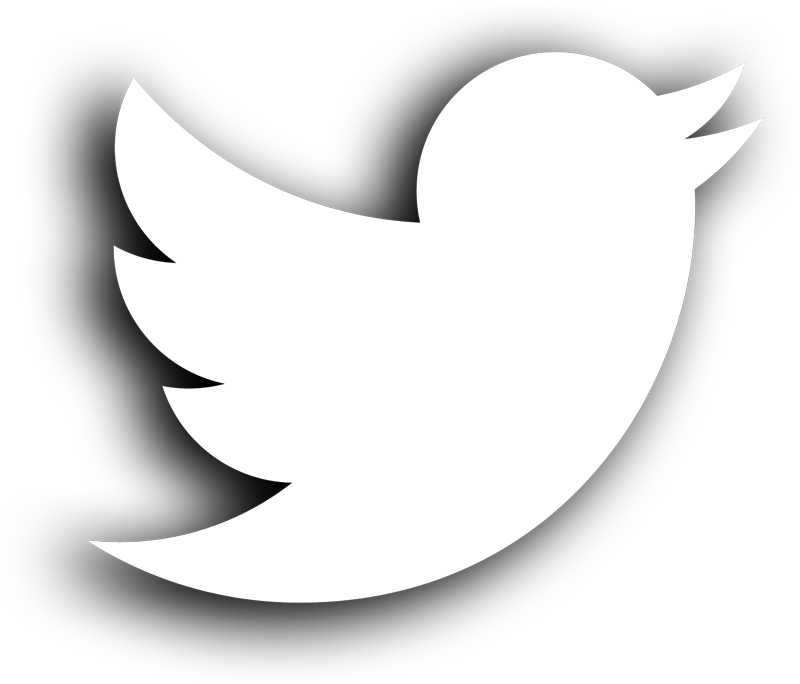What is PPC advertising, and should you be using it?
If you’re navigating your way through the world of digital marketing, you’ve probably heard of pay-per-click (PPC) advertising and might be wondering how exactly it works, and if it’s a smart investment for your business.
In this article, we’ll cover how pay-per-click ads work, the benefits of using pay-per-click ads, the various platforms where you can use PPC advertising and the differences between them.
What is PPC advertising?
The basic idea of pay-per-click advertising is pretty simple - businesses place an ad on an online platform, and only have to pay for that ad when it is clicked.
Each platform has its own system for ensuring that relevant ads appear for the right consumers, whether that be keywords or audience targeting. Some platforms, like Google, also use bidding or auction systems to determine which PPC ads will appear above others. We’ll discuss this in further detail later on.
What are the benefits of PPC advertising?
Pay-per-click advertising is a valuable tool if you use it properly. Some of the reasons that you should use PPC are:
You only pay when an interested person clicks
Unlike other forms of advertising, with PPC you only have to pay when someone engages with your ad. In this form of advertising, you still receive great brand awareness at no cost, and only when someone clicks on your ad do you pay anything.
You can see fast results
While investing in increasing organic search traffic is important (Hey! We can help with that, too!), you can see immediate results with PPC advertising. Increasing organic search traffic takes time, but PPC campaigns can bring in traffic and conversions right away.
You can use advanced targeting to reach potential customers in the right place at the right time
Rather than putting an ad out there and hoping that your niche target market sees it, with PPC you can use advanced targeting features to narrow down who sees your ad and when they see it. For example, a fancy restaurant may target people 30+ in their area with a household income of $100,000+ between 3 p.m. and 6 p.m. on Fridays.
You can make sound decisions based on real data
In a PPC campaign, you can see real time results, and make decisions accordingly. You can review your results and determine whether to change your ad, increase your budget, stop the ad and the budget, or continue on, all based on actual data in real time. For example, based on the data you receive from running your PPC ads, you may notice that visitors using mobile devices 2x more likely to make a purchase. Therefore, you may choose to allocate more budget to push your ad to mobile devices versus desktops.
You set your budget to control costs
With PPC advertising, you can set your own budget, determining how much you want to spend on the advertisement. The success of your advertising will depend on a variety of factors, including the budget that you set, but ultimately you can pay what your budget will allow.
What are the PPC channels that you can use?
Google AdWords as a PPC Channel
You know when you search for something in the Google search engine, and a few website ads pop up at the top above the organic results? Those are Google AdWords ads, and they’re a form of PPC advertising.
Google AdWords have become a popular form of advertising for businesses of all kinds - B2C or B2B, international or local, big or small. Essentially, Google AdWords uses keyword targeting, so the ads that appear are relevant to the term that was searched.
Google AdWords also uses a bidding system, which means that the amount you are willing to spend on ads is competing with the amount that other similar businesses are willing to spend on their ads.
There are two ways to advertise on the Google platform - either on the Google Search Network, or the Google Display Network.
Google Search Network ads are the ones that appear on the Google search engine after you look something up - the type of ads that we mentioned at the beginning of this article. These use only words, and are meant to target potential customers who are searching for terms relevant to your business in Google. For example, if you perform a Google search for plumbers in your area, you will likely see a few ads for different plumbing companies.
Google Display Network ads may use text, images or videos and can appear on many different websites. Websites sign up to host Google Display ads, and then Google targets your ads to websites that are relevant to your business. For example, if you were on a website that offered camping tips, you may see an ad appear for a store that sells tents.

Why is Google AdWords such a great tool for advertising?
Your ad only appears when someone is using relevant search terms
With Google AdWords Search Network, you know that your ad is reaching the right people. The ad appears for those who are searching for terms that are relevant to your business, so the odds of them being interested in your ad and clicking it are high.
Requires few supporting assets
No photos, videos or graphics are required to create Google ads, especially for the Google Search Network. But don’t be fooled, there’s still a lot that goes into creating one. The algorithms and bidding processes can get a little tricky, and usually ads require continuous monitoring and tweaking for best results.
Large audience
Younger generations are veering away from Facebook while older generations aren’t as keen on Instagram and Twitter, and people of all ages are opting out of social media altogether. However, pretty much anyone who uses the internet uses Google on a regular basis, and since Google Display Network ads appear on other websites as well, it’s pretty tough to use the internet without seeing them.
Using Facebook for PPC Campaigns
One of the pay-per-click advertising channels available that can often get you the best return for your marketing spend, is Facebook advertising.
Facebook is a great tool for getting in front of your future customers and introducing your brand to them. The platform is especially strong for B2C businesses, but has also shown strong results for B2B when done properly.
Why is Facebook such a great tool for advertising?
Aside from the more than 2 billion active monthly users, there are a number of reasons to include Facebook advertising in your strategy.
The incredible amount of user data
Facebook collects copious amounts of user data, far exceeding the typical demographic information. With this data, advertisers can very effectively target their preferred audience, using age, location, gender, interests, and more. For example, a trades school could target 17-18 year old males in Kelowna that are interested in carpentry.
A low CPC
Although it is always growing, Facebook has a fairly low cost-per-click (CPC) compared to other advertising mediums. Depending on the product or service, the target audience and the ad budget, an average CPC on Facebook is under $2.00.
Detailed reporting metrics
Knowing if your advertising is working or not is key to earning the best ROI on your campaign. Facebook provides extensive reporting metrics on your ads. Not only can you view your ad’s reach, impressions, CPC, and engagement, but you can also see how far into a video ad viewers watch, what the click through ratio (CTR) is and website conversions and leads.
Using Instagram for a PPC marketing campaign
Instagram is another social network that offers PPC advertising. Instagram offers a more limited audience than Facebook, but is quickly becoming one of the most popular social networks with over 800 million active users and counting.
Instagram is all about the visuals, and is especially popular with younger generations. Instagram may not be the best advertising venue for every business, but for those whose target audience uses Instagram, it can be extremely beneficial.
The trick to Instagram is keeping it as natural and organic feeling as possible. Use attractive images or videos that represent your brand, are relatable to your target audience and do not appear too ad-like. And, just like other forms of PPC advertising, you only pay when your ad gets clicked.

Why is Instagram such a great tool for advertising?
It’s visual
Instagram is the perfect place to get creative and show off your brand visually. Studies have shown that in today’s age of clutter and information, posts that include images produce 650% higher engagement than those without.
It’s linked to Facebook, including targeting capabilities
Did you know that Instagram is owned by Facebook? Instagram ads are managed via the Facebook ad manager, which makes it easy to use the same ad on both platforms if you wish, and collect all the same data that is collected for Facebook ads. As well, Instagram learns about its users based on their location, what they like, what they click on, etc. This means that Instagram ads can be targeted in the same way as Facebook ads.
Less clutter and higher engagement
Because Instagram is a bit newer to the pay-per-click ad game, there is less competition. Ads appear quite organic as they become part of a user’s feed or their stories, which makes them more consumable.
Don't forget about Twitter for PPC!
Images are to Instagram as words are to Twitter.
Twitter is all about getting messages across as concisely as possible due to its 280 character limit. Images and videos can also be used on Twitter, but what makes Twitter special is its emphasis on hashtagging, trending topics and succinct information.
Twitter is a great place for news, announcements and wit. And although its audience is smaller than that of Facebook (over 300 million active users), it does offer some unique features that aren’t found elsewhere, making it a great place to advertise for certain businesses.
On Twitter, you can promote a specific tweet, or an entire account.

Why is Twitter such a great tool for advertising?
You get to set specific marketing goals, and that’s what you pay for
Not only does Twitter offer a PPC option for ads, but advertisers are able to set even more specific goals, and only pay when those goals are reached - for example, gaining new account followers or sending traffic to your website.
Super targeted audiences
Unlike other social media platforms, Twitter ads can be targeted to users who have used a specific keyword or hashtag. This means you can get super specific with who you’d like to target with your ad. Ads can also be targeted based on who has engaged with your tweets in the past, and advertisers can create their own custom audiences with the Twitter handles of those they would like to target.
Low CPC
Because there is less ad competition on Twitter than there is on other platforms like Google or Facebook, the cost tends to be lower, and there is no minimum budget.
LinkedIn is a great PPC tool for B2B advertising
LinkedIn is another social platform with pay per click ad options. Although it is a smaller audience than other social platforms with 250+ million monthly active users, the type of users and information they provide about themselves is different from other platforms, which is what sets LinkedIn apart.
LinkedIn was built for professionals, and so a lot of its users are decision-makers or people looking to build professional connections. Similar to Google AdWords, LinkedIn uses a bidding system for ads.
Why is LinkedIn such a great tool for advertising?
Different targeting options
On LinkedIn, you can target users by more professional traits such as job title, function, skills or industry.
Ideal for B2B advertising and recruitment
As mentioned above, LinkedIn is basically a database of professional workers in a variety of industries, which makes it perfect for B2B advertisements and recruitment.
Up-to-date demographic info
Due to the nature of the platform, LinkedIn users are very likely to keep their profiles up-to-date and continue to add relevant information about themselves whenever they can. This means that the metrics you use to target your audience are more likely to bring you to the right people.
Should you use PPC advertising in your marketing campaign?
Pay-per-click advertising is a valuable tool for reaching your customers at the right time, in the right place, and before your competition does, but don’t jump into it blindly. A successful PPC campaign needs a well-planned strategy and great copy and visuals.
Pay-per-click ads often need to be monitored, re-worked, and then re-worked again before producing optimal results - but once this is achieved, a PPC advertisement’s return on investment is worthwhile.
If you’re interested in learning more about whether or not a PPC campaign is right for your business, give us a call - we would be happy to help!
Sign up for our e-Newsletter
And we will keep you connected to the latest marketing trends, new product offerings, offers, and learning sessions.